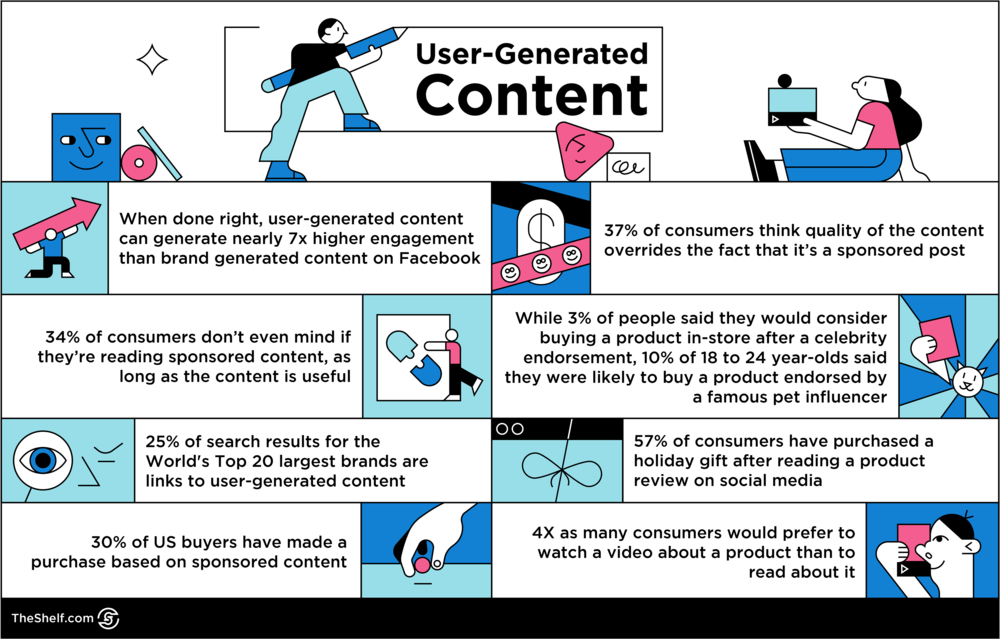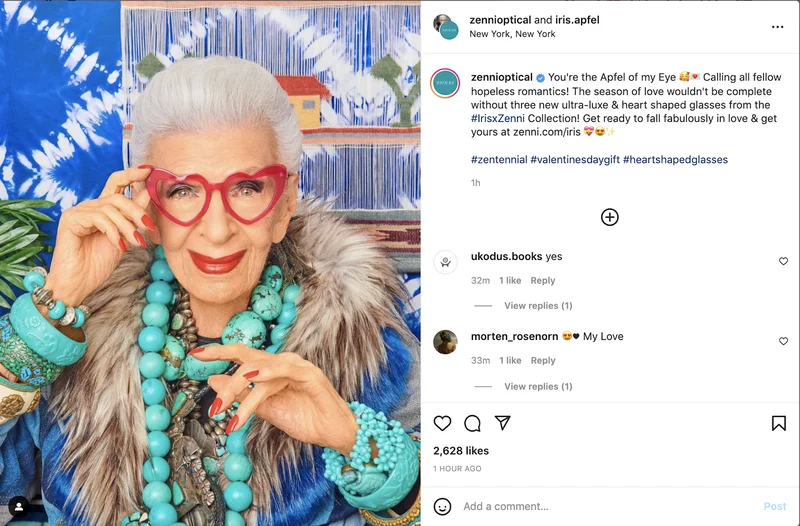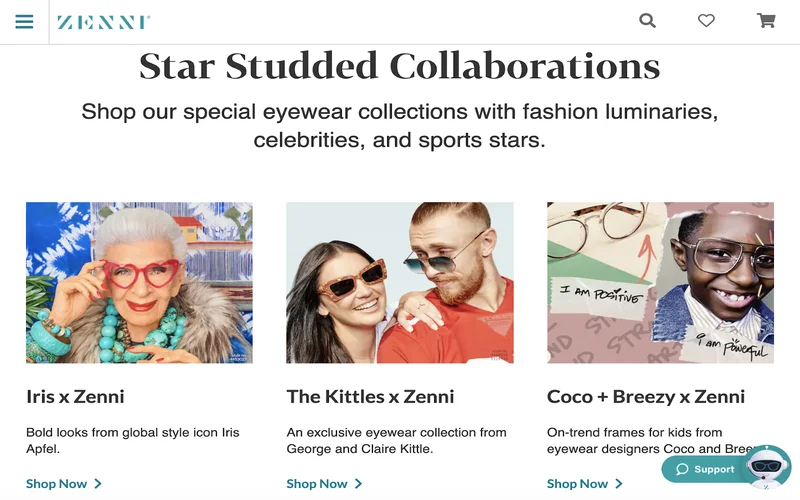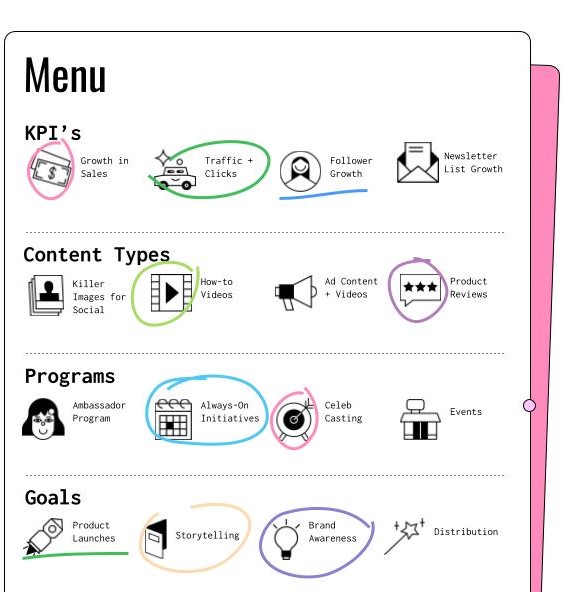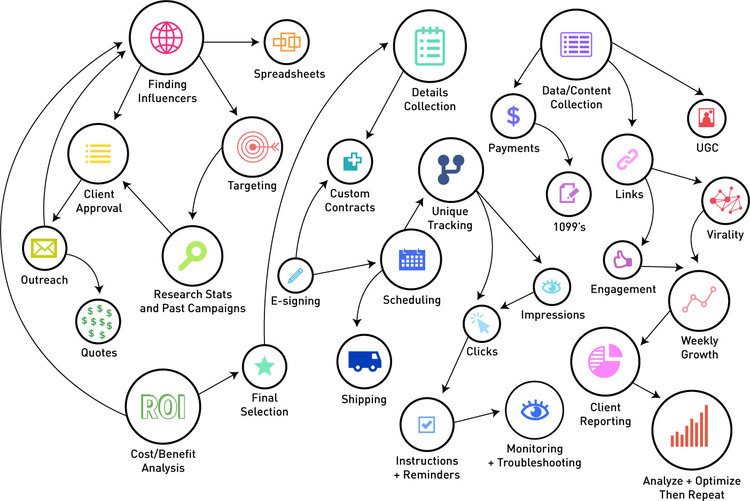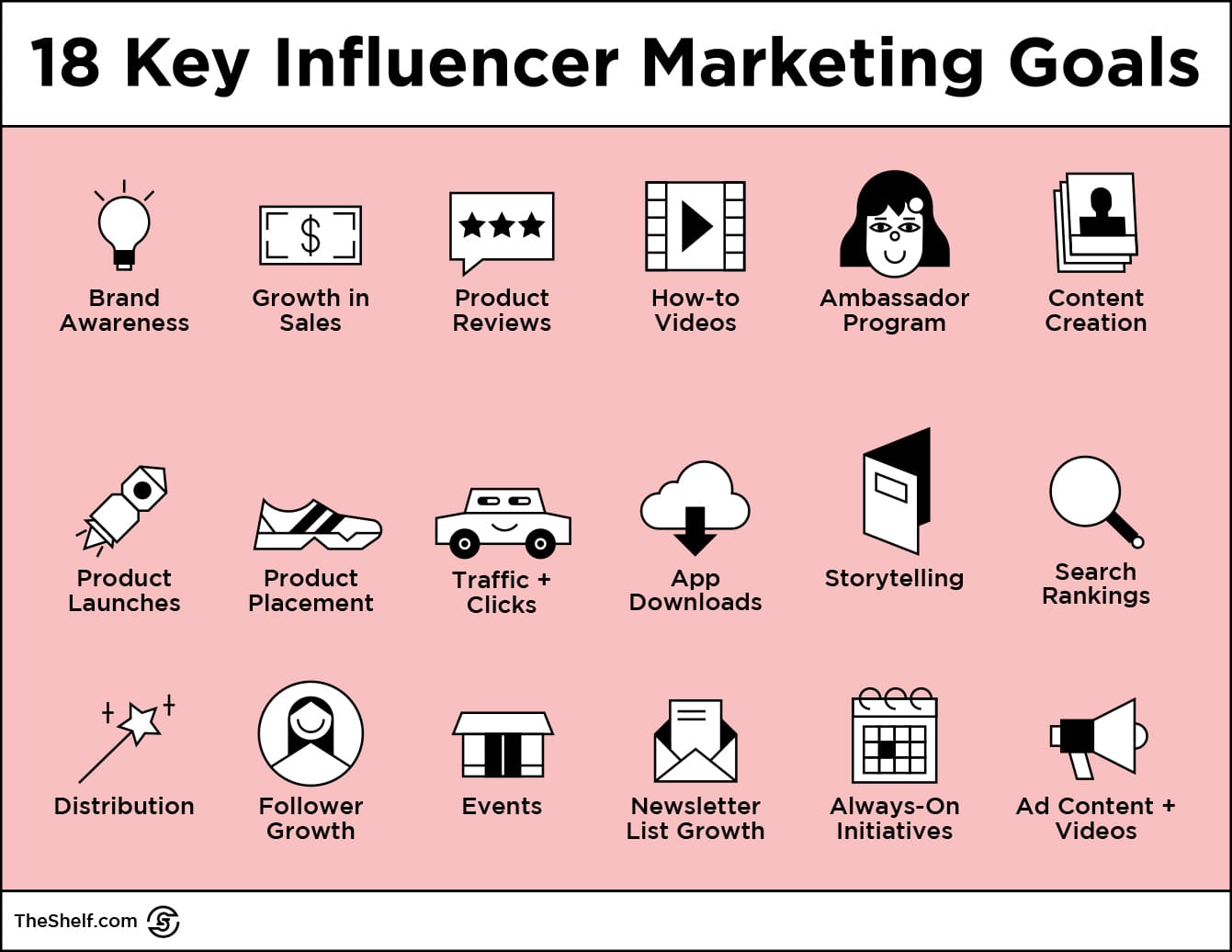Influencer marketing is a powerful tactic that as many as 9 in 10 brands are now using to reach new audiences and drive marketing results. Incredible, right?
Influencer marketing is a powerful tactic that brands rely on to reach new audiences and drive marketing results. Do you know that as many as 9 in 10 marketers are now incorporating influencers into their digital marketing strategies? Incredible, right?
When The Shelf first became a living, breathing platform, there were a handful of influencer marketing agencies, a handful of influencer marketing platforms, and a whole bunch of questions brands wanted answered. Fast forward to 2023, and there are tons of tools, tons of data, and tons of proof that influencer marketing works.
So, with us being total experts at building, managing, and optimizing influencer marketing campaigns, we thought we’d create this comprehensive overview of some of the most important aspects of influencer marketing. Plus, we’ll weave in answers to some commonly asked influencer marketing questions. 😇
We also have an influencer marketing strategy guide that you can check out as well.
WHAT IS CREATOR MARKETING?
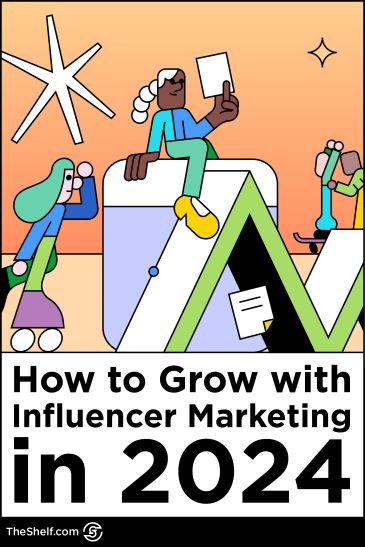
What Is Influencer Marketing, or Creator Marketing?
The first thing we need to answer is what is influencer marketing? Influencer marketing isn’t new. The history of influencer marketing goes back hundreds of years. The current iteration of social media-based influencer marketing is actually very new.
Here’s a simple definition of influencer marketing:
Influencer marketing, also called creator marketing is a type of word-of-mouth marketing strategy in which a company, brand, or entity pays an individual who holds a lot of clout on social media to endorse their product. Influencer campaigns are used by businesses to engage consumers with their brands by leveraging the trust, credibility, and reputation of popular social media creators.
An influencer campaign may be a one-off post on social media channels such as Instagram, TikTok, YouTube, and Facebook. Campaigns can also extend into a series of posts over time on the same social media channels and even with the same influencer(s), usually in the form of a brand ambassadorship, which is a type of influencer partnership.
What Makes Creator Marketing So Effective?
Influencer marketing works. In fact, if you polled 100 marketers, at least 80 of them will tell you influencer marketing is as effective, or more effective, than the other marketing tactics they have used. Despite rumors that influencer marketing is dead, dying, or tapering off, the data shows that more companies are investing more money into influencer marketing year over year, social media companies are making hefty investments into influencer education programs, and governments are creating and reshaping advertising laws to address the influencer marketing industry. So, no… not dying.
There are three main reasons why influencer marketing is so popular among brands that want to market their products or services:
-
-
- Influencer marketing offers a level of authenticity and relatability that other marketing tactics have a hard time replicating.
- The proliferation of social media has made it easy to spread the word about a brand or product (and its benefits) with just a single click.
- Influencer marketing is a cost-effective way to expand your audience, get real-time feedback on the effectiveness of live campaigns, and create a catalog of reusable marketing assets without having to bring in a creative agency all the time to do the work.
- Influencer marketing also improves the effectiveness of your other online and offline marketing efforts. So, the question is never influencer marketing vs Facebook ads, but rather, influencer marketing AND Facebook ads. The best marketing pushes will take a full-funnel approach to digital marketing.
-
DID YOU KNOW?
A Few Telling Facts About Influencer Marketing
If you happen to work in the digital marketing space, or you run any part of your business through digital marketing channels (which most B2C businesses do at this point), you already know that things change fast in the digital space. Influencer marketing is not a new invention, but today’s iteration of social-media-driven word-of-mouth marketing has really only existed in its current form for about the last decade.
We love data, and it’s always fun to roll out the latest influencer marketing stats. So, we’ve compiled just a few important tidbits of information that you may find compelling enough to keep reading (or rabbit hole by clicking through to other articles – your choice). Let’s hop to it.
The Influencer Marketing Space is Still Growing
Despite a pandemic, the global influencer marketing industry more than doubled in value between 2019 and 2021, jumping from $5.6 billion to more than $13 billion in 2021. By the end of 2023, the industry is expected to exceed $20 billion in value.
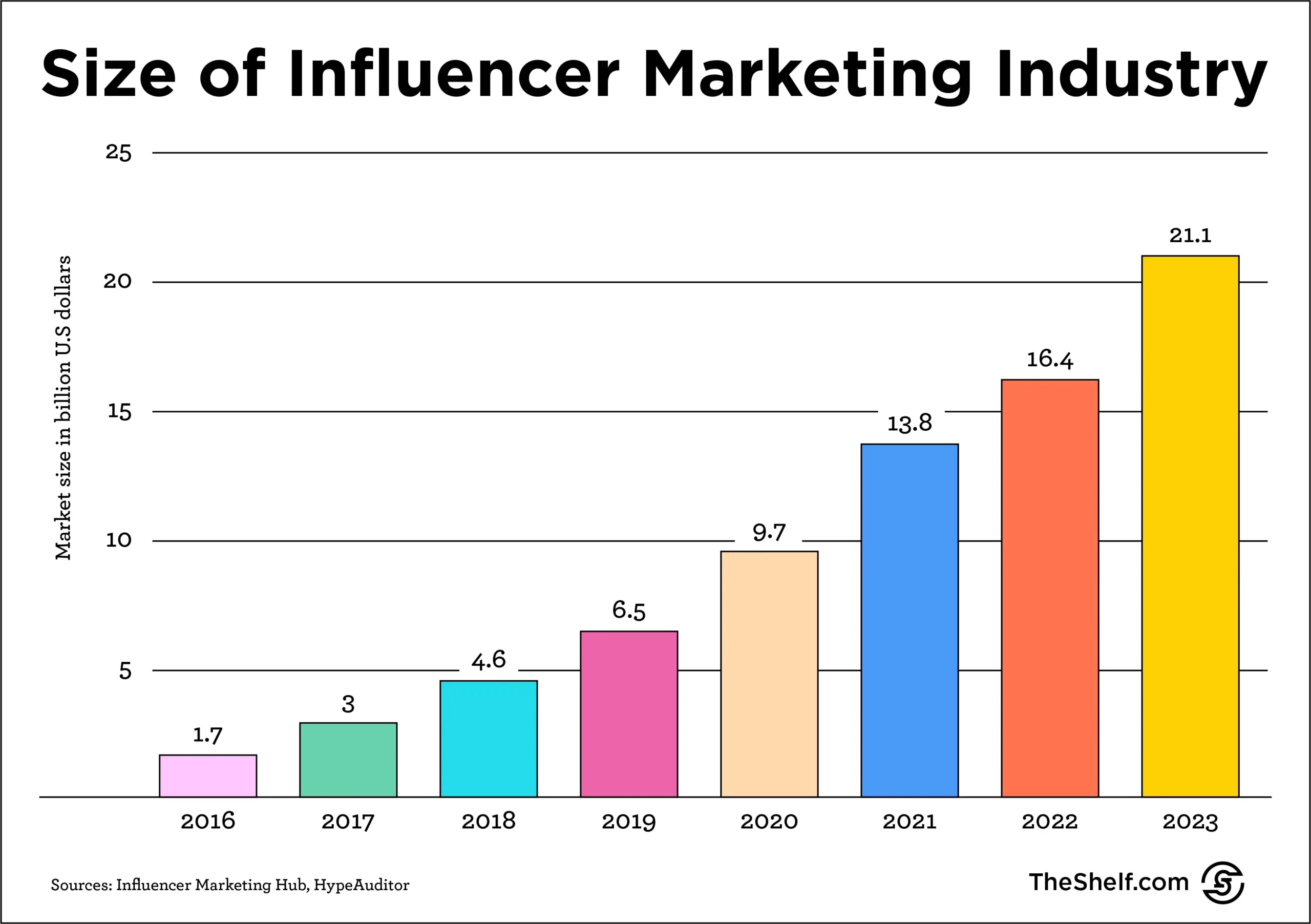
People Like Influencers
We know. We get it – every now and then you see a questionable headline (like the one about this riot that erupted in NYC when a gaming influencer underestimated the demand during an in-person PlayStation giveaway event). Legal departments are worried about brand safety. The product team wants the right language to be used with ads. On the brand side, it seems like there are a million little things that could end up being a big deal if things go sideways.
When it comes to consumer sentiment, influencers are influencers because they’re credible, trusted and well-liked by their followers.
-
-
- 82 percent of social media users follow at least one social media influencer.
- 1 in 5 global social media users between the ages of 16 and 64 years old say following celebrities and influencers is one of their primary reasons for using social media at all.
- 61 percent of consumers interact with an influencer at least once a day, and 35 percent interact with influencers multiple times a day.
- 6 in 10 teenage YouTube subscribers relate to, trust, and follow advice from influencers over celebrities.
- 40 percent of millennials say influencers know them better than personal friends.
-
People Trust Influencers
-
-
- 80 percent of consumers made a purchase recommended by an influencer by clicking on a link or image that was shared.
- 66 percent of respondents agree that social media plays a crucial role in impacting their decision to consider a brand.
- 50 percent of consumers surveyed have visited a website to buy a product or service as a result of seeing it in Stories
- 81 percent of millennial women say social media is the best way to reach them.
- Studies show that conversions increase by at least 10 percent for brands that use influencer-generated content in the online purchase path.
-
Social Media Influences Consumer Spending, Sometimes In Unexpected Ways
If I had one chance, and only one chance, to persuade you of the far-reaching real-world impact of social media content, I’d take you to October 13, 2020. What the heck happened on October 13th, Sorilbran? Well, that’s the day that Fleetwood Mac’s “Dreams” re-entered Billboard’s Hot 100 43 years after it was first released.
On September 25th TikToker @420DoggFace208 shared this 10-second video of himself lip syncing to “Dreams” while sipping Ocean Spray cranberry juice and coasting along on his skateboard. It was a cool vibe for sure. But here’s what happened as a result of his video:
Not only did his viral vibe get Fleetwood Mac’s song re-charted, but in the three-week period after his video, “Dreams” garnered sales from 32K downloads in the US alone, and millions of on-demand streams, according to Billboard. Now, based on Billboard’s article, that song probably generated upwards of 1000 downloads a week, which means a TikTok of a guy listening to a rock classic on his morning commute 30X’d the sales of said rock classic. That’s crazy!
CREATOR MARKETING TRENDS
Influencer Marketing Trends to Watch in 2024
So, what will influencer marketing look like for the next year? We actually created a post that lists the 17 big influencer marketing trends. Here are five important trends from that list that we’re watching. These will directly impact your influencer marketing in 2023.
-
-
- Creators have evolved into brands, a fact recognized by adept marketers who comprehend the essence of creator marketing. Rather than merely hiring influencers, brands now forge partnerships with them. As a result…
- Influencer contracts will continue to become more nuanced. During the events of 2020, it was influencers who led the charge toward establishing the new normal. They served as impromptu online community leaders and connectors who kept us all emotionally afloat. That shift permanently changed the dynamic between influencers and brands.
- Live Shopping will become integral to social commerce and influencer marketing. This influencer marketing trend has gained traction in recent years, particularly with the rise of shoppable content and the emergence of QVC-style live shopping experiences on social media platforms. Among various trends, this stands out as a favorite, offering an immediate impact on influencer marketing campaign ROI.
- Platforms will make it even easier for creators to collaborate on their platforms. Not only that but it will be easier to recognize collaborations and brand sponsorships when you see them. Instagram’s rolled out multiple features that will make it easier for content creators to collaborate with other creators, share content and engagement metrics. The features also highlight sponsored content in a way that’s cool and desired, not in a “Skip Ad” kind of way. As is the way with social media networks, if one network launches a significant feature, others will follow suit.
-
SETTING GOALS AND FORMALIZING STRATEGIES
There Are 3 Main Types of Influencer Campaigns
Now, let’s talk about the different types of influencer marketing campaigns. In general, influencer campaigns are customized to prioritize brand lift, content, or clicks/traffic. While most influencer activations are specifically designed to increase brand awareness, influencer marketing positively impacts your customers all along the path to purchase.
Brand Awareness
Brand Awareness Campaigns work best when your goal is to introduce a new product, when you’re rebranding, OR when you’re trying to present a value prop that would interrupt someone’s current purchase behavior (like trying to get someone to cancel their dog food auto-ship and switch to your cleaner, more nutritious dog food).
Tactics You Can Use to Boost Brand Lift
Host Giveaways
-
-
- Freebies are a good way to get eyes on anything, right? Most of us have seen different influencers or brands announcing giveaways in their feeds. Giveaways are a good way to grow your following on social media since eligibility to enter the giveaway usually requires people to follow the brand, tag a friend, opt into an email list, or something like that. Giveaways also provide a good way for brands to engage with their audiences and get feedback on products, promotions, and messages in real-time.
-
Gifting
-
-
- Gifting is another way to build an audience on social channels AND get multiple people talking about your brand or product in a short period of time. Gifting can be tricky because the value of the gift needs to be in line with an influencer’s existing rates AND be something an influencer would want or need. Most influencers will expect monetary compensation of some sort, especially if you’re negotiating reuse rights.
- But it’s a valuable technique known as product seeding. After receiving the gift from a brand, the influencers share their reactions through amazing content posts online. This effort can help kickstart a larger campaign. It also helps to build relationships with influencers and give you an idea of potential ambassadors for your brand. Perhaps most important, seeding is an opportunity for the brands to get a first and honest review of their product. When the influencers love something, it will turn into a positive product review that can compel others to keep your brand in mind for future purchases.
-
Social Media Takeover
-
-
- This type of influencer marketing is highly preferred to increase brand exposure and provide the audience with some interesting content. Social media takeover, and especially an Instagram takeover happens when a brand allows an influencer to create content specifically for the brand’s feed and audience for a set period of time. The goal is to widen your audience by partnering with an influencer who knows how to create compelling content that will live in your feed instead of theirs.
- Takeovers can help you promote events and offers by incorporating interactive features, contests, share selfies, Q&A to engage the followers. Takeovers can really boost your brand awareness efforts.
-
Content-Focused Campaigns (UGC Campaigns)
Content Campaigns are best when your goal is to get a ton of influencer-generated content to reuse across your branded channels and in online and offline ads. Of the three, the user-generated content campaign (also called a UGC campaign) is most often the missed opportunity for brands.
A UGC campaign is designed to deliver high-quality content from content creators that the brand can reuse across its branded channels, including ads, social media content, websites, ecommerce platforms, and in-store visuals. It’s not unusual for a brand to run influencer campaigns just for the UGC – influencers posting that content to their feeds is just a really great bonus.
Click-Focused Campaigns
Traffic/Clicks Campaigns work best for increasing site traffic, growing your list, getting sales and when you’re also running retargeting campaigns (and need prospects to see your brand a few more times to stay top-of-mind)
Tactics You Can Use to Drive Users to Take an Action
Affiliate Marketing
-
-
- So, brand affiliates are content creators who earn a commission from every product sold using the influencer’s customized links. Affiliate marketing is usually a big part of brand ambassadorships. Influencers can get discounted products plus they earn money for the products they sell.
-
Unboxing Review
-
-
-
Unboxing videos are popular, from kids to the over-55 crowd. In fact, they’re so popular that YouTube is beginning to suppress unboxing videos that target kids as part of an effort to keep kids safe from unethical practices online. But kids LOVE unboxing videos as much as the rest of us.
-
Influencers use unboxing and reviews to provide their audience with honest feedback in the form of unfiltered first impressions of the products they receive in the mail or buy in stores.
-
Unboxing videos can highlight the value of the product IF they’re created in a way that is crafted to the specific preferences of the target viewer. For instance, while Millennials welcome opinions and recommendations that have that personal touch, the 2 in 3 Baby Boomers who watch YouTube for information prefer unboxing videos that focus on product specs and facts and that keep the editorializing to a minimum.
-
-
Sponsored Blog Posts
-
-
-
Blogs have a longer life cycle than social media content – years versus days, in most cases. So, blogs can provide consistent traffic for brands for months to come. Companies can partner with influential bloggers to create content on their blogs that incorporate their products.
-
Sometimes sponsored blog posts are dedicated posts that only feature one brand. At other times, they’re posts that incorporate multiple related brands into one post (for example, a Fenty Beauty haul vs. a Sephora haul).
-
The value of a sponsored blog post is that it can help drive traffic back to a sales page or product page on the brand’s website in the form of affiliate links, discount codes, or VIP access to different events that you can only get by clicking through from the blogger’s post.
-
-
GET TO WORK ON YOUR INFLUENCER STRATEGY
Tips for Building Your Influencer Marketing Strategy
Building an influencer marketing strategy is not an easy job. A lot of marketing teams are surprised when they discover how much time and effort (and other resources) it takes to run a successful campaign. There are a lot of moving pieces, right?
Step 1 Set Your Campaign Goals
The first order of business for any influencer marketing activation is to determine what it is you want to accomplish. Identifying the goal of your influencer marketing campaign shapes the rest of your efforts, from the influencers you choose for your collab to the type of influencer marketing KPIs that will actually matter for your campaign.
Identifying your goal is part of the campaign planning process. What do you want to achieve? Who are you targeting? What are your expectations? When you know what you want your influencer campaign to do, you can structure it to achieve specific goals.
Step 2 is to choose your target audience.
This one seems simple enough, but for influencer campaigns audience targeting is essential. The more specifically you can define your audience, the better your results will be. For instance, we ran a campaign for a well-known business directory. While the customers of the directory are businesses, the influencer campaign we ran for them specifically targeted African American consumers in major U.S. cities. Why? Because the campaign goal was to boost awareness around a new feature in the app that helped people find Black-Owned businesses to patronize. Our client was a B2B company, but the campaign aimed to target the customers of our client’s customers.
Step 3 is to identify the right marketing channels to reach your audience.
Assuming you’ve already selected an influencer marketing company to help build and manage your campaign, the next important step is identifying the right channels for your influencer campaign. Channel selection takes into account where your audience spends time online, and the goal of the campaign, as well as the product or brand you’re promoting in your campaign.
Knowing which platform would work best to help you reach your goal. So, here’s how your goals can determine your platform. Let’s say you want to run an influencer marketing campaign for brand awareness – a straightforward top-of-funnel activation. You would aim to partner with larger influencers who have higher engagement on a platform like TikTok, Instagram Reels, or YouTube. These creators likely create content that has high entertainment value or educational value, as those two categories of content are typically prioritized in the feed.
On the other hand, if you’re running a campaign that’s more mid-funnel or bottom-of-funnel, you’ll need to partner with influencers who hold influence in your particular vertical and with a segment of your target audience. Your campaign would need to run on platforms that prioritize connection and community-building such as Instagram Stories, Facebook groups, and Discord.
Knowing where your audience spends time online. When your target audience spends time online, where do they go? Are they more likely to be on Instagram or Twitch? Pinterest or LinkedIn? And how do they typically consume content? Do they prefer videos or pictures when it comes to your topic?
Which medium should you use? Then as it relates to your product or brand, you have to figure out the best way to communicate the value of your brand. Clothing retailers usually have display windows because styling different pieces as part of an ensemble is a good way to sell clothes.
Whereas SaaS companies usually need to demonstrate the value of their products with explainer videos that include walkthroughs of the dashboard or screenshots of different features. Demos are a normal part of the regular sales process.
On the other hand, when it comes to dietary supplements or different types of financial products or insurance, brands usually need to explain the value of the product because that’s the best way to communicate its utility.
So, what about your product? What is the best way for people to understand the value of your product? And how can you tie the medium to the channels where your audience is spending time?
Step 4 is to find influencers who can help you accomplish your campaign goals.
After you know what you want to accomplish, who you’re targeting, where you’ll run the campaign, and the type of content you need, you can use that info to figure out the basic criteria your influencers need to have. Ideally, you want to choose creators who are already talking about your brand and using your products. But you also have to loop all those other elements into the mix, too, along with demographic and psychographic data, creative skillset assessment, and an analysis of the influencer’s audience to estimate how much of their audience really is a potential buyer for you.
INFLUENCER SELECTION
How to Reach the Right Influencer Partners
Finding the right influencer partners is a mystery for about 75 percent of brand marketers planning influencer campaigns. It’s tough for brands to spot influencers who have a bunch of fake followers (50 percent of brands polled say this is a challenge for them), they’re not sure how to price influencer services as the cost of influencer partnerships continue to increase (38 percent have trouble with this), there are brand safety and alignment issues that pose a challenge (28 percent), processing payments to content creators is a challenge (48 percent), and making sure influencers are receiving products and then delivering content on time (49 percent).
It’s a lot to manage. But there are ways to go about figuring out which influencers to choose for brand partnerships. First things first, there are a few things you need to come to the table already knowing, and these parameters dictate the types of content creators you pursue for the campaign:
-
-
- Your campaigns goals
- The kind of content you need for the campaign
- Which social channels will deliver the best ROI
- Your target audience
-
The influencer selection process relies pretty heavily on the demographics of your potential influence partner, as well as the demographics of the influencer’s audience. Here are a few criteria that will impact your selection process:
-
-
- Age
- Gender
- Marital status
- Family size
- Race/ethnicity
- Background
- HH income
- Location
- Language
-
Then there are performative and behavioral elements to consider:
-
-
- Follower count
- Reach
- Engagement ratios
- Types of engagement
- Platforms on which influencers are most active
- Topic, quality, and frequency of posts
- Previous partnerships
- Categories of actual authority
- Brands they mention or shop
- Topics they cover on other social platforms
- The price range of the brands they mention
- Hashtags most frequently used
-
And, of course, creative assessments that will need to be done:
-
-
- Storytelling
- Aesthetic
- Quality of content
- Entertainment value of content
- Audience sentiment
- Level of creativity
- Values
- Relatability
- Influencer personality
- Lighting
- How they engage with followers
-
Now, we would be remiss if we didn’t let you know that influencer selection is a time-consuming process. We actually have designated researchers on our team who use our proprietary influencer marketing platform to find the right influencers for the right campaigns. Because, as you can see, influencer selection is largely about having the right data.
How to Track the ROI of Your Social Media Influencer Marketing Strategy
So, here’s where the rubber meets the road. Campaign ROI is a touchy subject for a lot of brands. Something like 80%+ of marketers has tried influencer marketing. But a full 25 percent of them saw ZERO return on their investment.
Nothing wrong with influencer marketing – it’s an effective strategy for turning Likes into leads. But that’s only true when you understand that the success of your influencer marketing campaign hinges on all the other stuff we covered in this post.
Aside from properly structuring your influencer campaign, the most important thing you need to know is how to track, optimize, and measure the results of your influencer campaign. We talked a little earlier about the importance of making your campaigns trackable by creating pixels and branded links that each influencer can use to track engagement when traffic is driven off the social platform.
Key influencer marketing metrics to track based on campaign goals
Track your results based on the goals you want to achieve. Here are the most important metrics for each type of campaign:
For Brand Awareness campaigns…
-
-
- Reach and impressions measure how many times your campaign showed up in people’s feeds.
- Engagement (likes, comments, saves, shares, taps, and double-taps) measure the number of times someone stopped to DO something with your content
- Views measure the number of times people watch a video (for at least 3 seconds, usually)
- Followers measure the growth in your audience size that happened during and immediately after your campaign
- Brand mentions measure the number of times your brand has been mentioned or your branded hashtag used as a result of your influencer marketing campaign
-
For Click-Focused campaigns…
-
-
- Link clicks and swipes measure the number of times someone used one of your links (or affiliate links) to learn more about your offer on a different platform, usually an influencer’s blog, a sales page, or the product page
- Site traffic measures the uptick in site traffic either to your product page or the influencers’ sponsored blog post about your product.
- Promo codes will help you track the number of users who saw your campaign and took an action by using a promo code during the checkout process. And if you created different promo codes for each influencer, you’ll also be able to determine which influencer sent the most buyers your way.
-
For Content-Focused campaigns…
-
-
- Engagement (likes, comments, saves, shares, taps, and double-taps) measure the number of times someone stopped to DO something with your content
- Views measure the number of times people watch a video (for at least 3 seconds, usually)
-
These two matter because if you’re going to repurpose content, you want to repurpose content that’s proven to resonate with your audience. Also, knowing which pieces of content garnered the most engagement will help you identify which influencers may be good partners for similar campaigns in the future.
Optimizing Influencer Campaigns for Better and Better ROI
Keeping an eye on the results of a campaign is an important part of tracking your results. That’s because you’ll be able to spot trends as they emerge. For instance, you’ll notice it when the content of a few influencers is outperforming the rest of the campaign content. So, you’ll know which content you should support with a paid strategy that will get your best-performing content seen by more larger audience.
Influencer Marketing Helps to Build On Your Established Online Presence
It took us about 4,000 words 😊 but I think we summed up the important aspects of launching an influencer campaign in this post. If you’re interested in something that digs a little more into influencer marketing tactics, we have another post (about 8,000 words) that will walk you through whitelisting strategies, repurposing content, campaign logistics, and all sorts of stuff.
Suffice it to say that influencer marketing campaigns work best when they are created within the context of your marketing ecosystem – your audience, your product, your brand persona, your product price… all these things shape how, when, and where influencer marketing happens. In 2024, influencer marketing is all about being responsive.
Digital marketing strategies fit together like puzzle pieces.
Your influencer campaign should be one of those pieces.
The Shelf is an influencer marketing agency that creates full-funnel influencer campaigns to help brands leverage touchpoints at every stage of the purchase process.
We partner brands with Instagram, TikTok, and YouTube storytellers for campaigns customized to boost the ROI of your overarching paid digital marketing strategy.
Not sure how to integrate influencers into your larger digital strategy? We have people who can walk you through that process... and give you some great ideas along the way. Click to schedule a strategy call.
Schedule a Strategy Session

